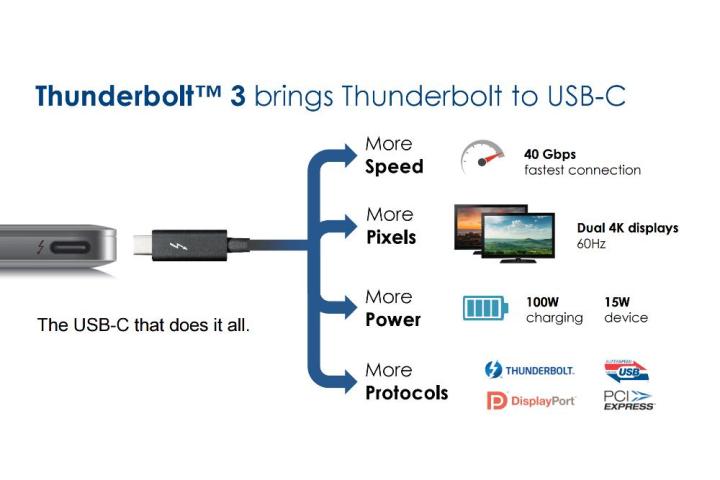
Thunderbolt’s latest iteration is nothing to laugh at even without USB Type-C support. It offers up to 40 gigabytes of data transfer per second, can handle two 4K displays at once (with a daisy-change configuration) and, like USB Type-C, can deal with up to 100 watts of power.
With the addition of USB support in Thunderbolt 3, Intel is highlighting its cross-standard compatibility. This latest iteration of
Related: The Hub+ wants to fix your MacBook USB Type-C connectivity woes
And, due to Thunderbolt’s daisy-chain support, this provides some very interesting opportunities for docking. A single
To be clear, Intel is not just talking about physical compatibility. Thunderbolt 3 integrates a USB 3.1 controller. What that means is, from a user perspective,
Intel is obviously trying to position Thunderbolt 3 as the one connection to rule them all. Bundling USB Type-C means there’s no major PC standard it does not support. Since this compatibility does not extend to the older but very common USB 3.0 connection, it won’t have an immediate impact. But it will become significant as USB Type C / USB 3.1 replaces the preceding standard over the next few years.
Editors' Recommendations
- USB-C charging laptops: Here’s what you need to know
- USB-A vs. USB-C: What’s the difference?
- Thunderbolt 4: everything you need to know
- This 240W USB-C cable opens up new charging possibilities
- CalDigit’s 18-port dock might be the ultimate Mac accessory



